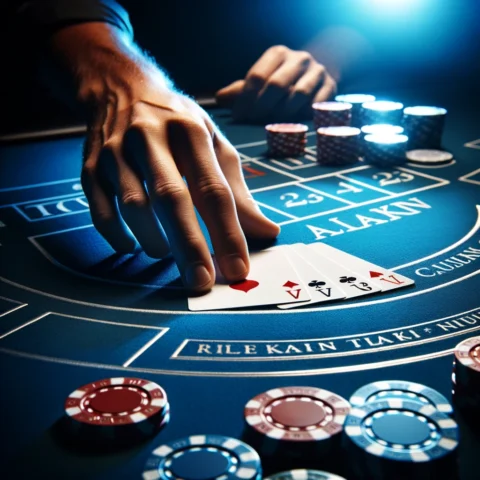When it comes to mastering Texas Hold’em, one of the most crucial skills to develop is the art of bluffing. A well-timed bluff can turn the tide of a game and intimidate your opponents, making them second-guess every move. However, bluffing isn’t just about putting on a poker face; it requires strategy, observation, and impeccable timing.
The Psychology Behind Bluffing
Understanding the psychology of your opponents is key to successful bluffing. Players are constantly trying to read each other, looking for tells or signs that reveal the strength of their hand. By studying your rivals’ behavioral patterns, you can determine the optimal moments to bluff and capitalize on their weaknesses.
Reading Your Opponents
To effectively read your opponents, consider:
- Their betting patterns: Are they aggressive or conservative?
- Physical tells: Do they fidget or show signs of nervousness?
- Verbal cues: Do they talk more or less when holding strong hands?
Executing a Successful Bluff
Bluffing is an art form that requires not just psychological insight but also situational awareness. You should only bluff in situations that increase your chances of success. For example, trying to bluff multiple players at once is usually less effective than targeting a single opponent. Below is a table that highlights favorable conditions for bluffing:
| Favorable Conditions | Rationale |
|---|---|
| Weak opposition | Players with weaker hands are easier to intimidate. |
| High stakes | Players are more cautious and likely to fold. |
For more advanced strategies and insights, visit betstrategies.wiki.
A critical factor in executing a successful bluff is recognizing the dynamics of the table and the tendencies of your opponents. If you’ve meticulously studied their behavior and betting patterns, you’ll be able to pick the perfect moments to make your move.
Risk Management and Bluffing
Bluffing, by its nature, involves risk. Calculating that risk can be the difference between winning big or depleting your chip stack. Being aware of your position at the table can give you a substantial edge. Bluffing from later positions, where you have more information about your opponents’ actions, often increases the chances of success. Below is a helpful list for considering when to execute a bluff:
- Position: Are you in an early, middle, or late position? Late positions provide more strategic opportunities.
- Chip Stack: Do you have enough chips to convincingly represent a strong hand?
- Opponent’s Chip Stack: Is your opponent low on chips and more likely to fold under pressure?
Balancing Bluffing with ‘Value Betting’
While bluffing is an essential tool, balancing it with value betting is crucial for a well-rounded strategy. Value betting involves betting when you believe you have the best hand, aiming to extract maximum chips from your opponents. Combining these strategies keeps your game unpredictable.
Practice and Adaptation
No two poker games are ever the same, which is why continuous practice and real-time adaptation are vital. Using poker software and simulators can provide valuable insights into improving your bluffing techniques. Consistently reviewing your play and learning from mistakes will help refine your approach.
Below is an example of how you can record and review your estimated outcomes for bluff attempts:
| Bluff Attempt | Outcome | Lessons Learned |
|---|---|---|
| Attempt #1 | Successful | Timing and opponent’s weak hand were key factors. |
| Attempt #2 | Failed | Misdread opponent’s strength; avoid bluffing against conservative players. |
Conclusion
Mastering the art of bluffing in Texas Hold’em is not achieved overnight. It requires a keen understanding of human psychology, precise timing, and strategic execution. By continuously adapting and learning from each game, you can enhance your bluffing skills and become a formidable player. Always combine your bluffs with solid overall gameplay to keep your opponents guessing and increase your chances of success in every hand.






